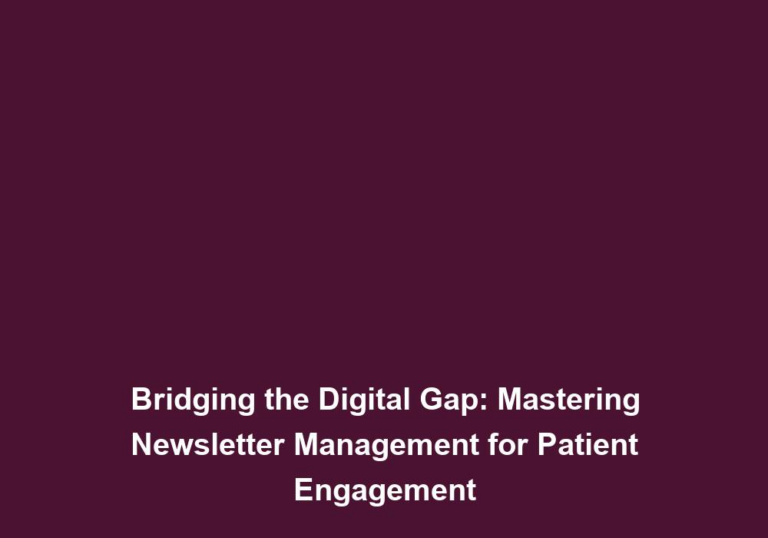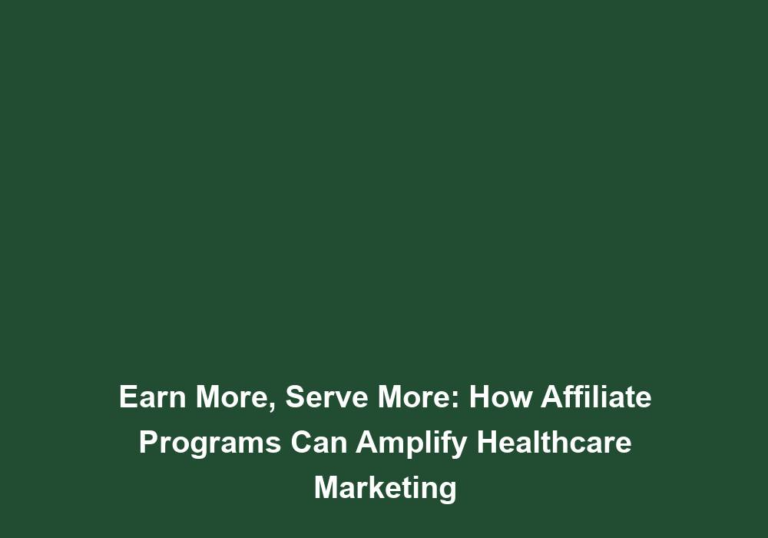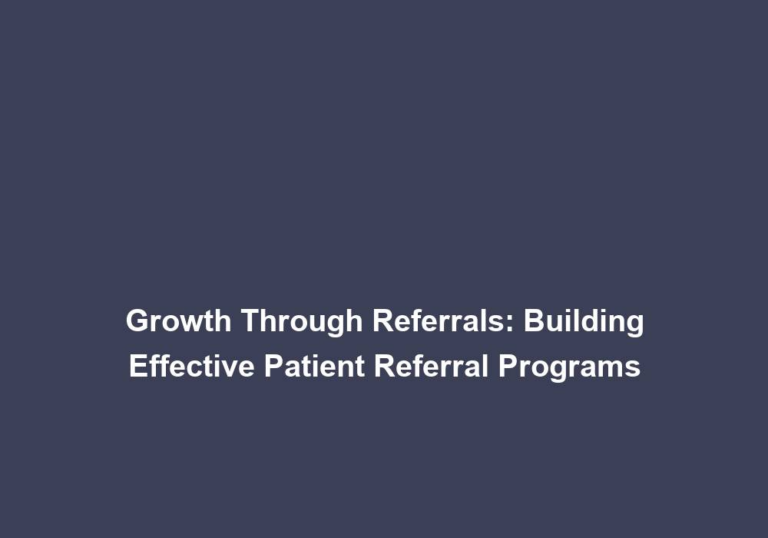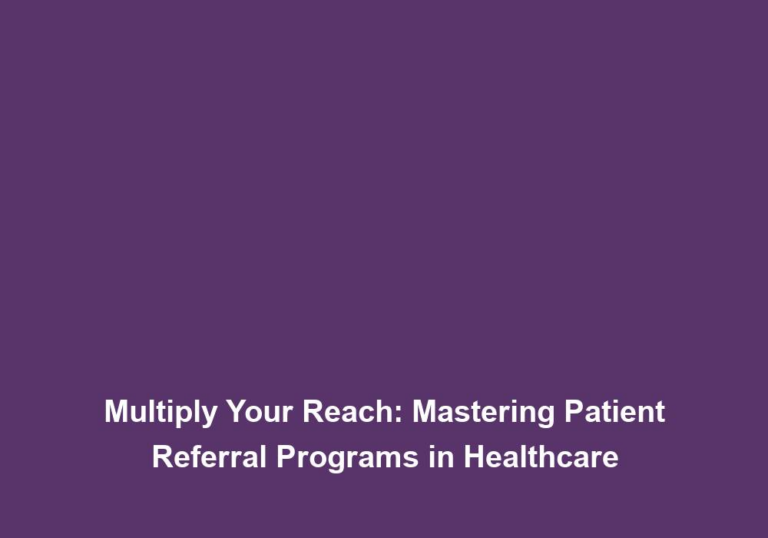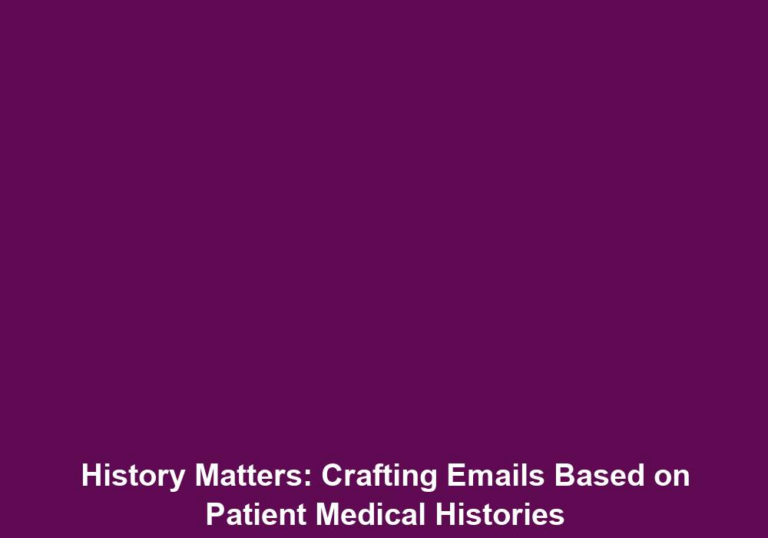The Art of Personal Touch: Mastering Segmentation & Personalization in Medical Emails
In today’s digital age, email marketing has become an indispensable tool for businesses in the medical industry. It allows healthcare providers to connect with their patients, share valuable information, and build trust. However, with the increasing volume of emails being sent every day, it is crucial for medical professionals to stand out from the crowd and deliver personalized messages that resonate with their recipients. This is where the art of personal touch comes into play, through the strategic use of segmentation and personalization techniques.
Why is Personalization Important in Medical Emails?
Effective communication is the cornerstone of the patient-provider relationship. Personalization in medical emails allows healthcare professionals to tailor their messages according to the specific needs, interests, and preferences of their audience. By delivering relevant content that resonates with the recipient, medical professionals can establish a deeper connection, build trust, and ultimately improve patient engagement and satisfaction.
Personalized emails make patients feel valued and understood, which enhances their overall experience with the healthcare provider. When patients receive emails that address their specific concerns, conditions, or treatment plans, they are more likely to engage with the content and take the desired actions. This personalized approach helps foster a sense of trust and loyalty between the patient and the healthcare provider, leading to better patient outcomes.
Segmentation: The Key to Personalized Medical Emails
Segmentation is the process of dividing your email list into specific groups based on defined criteria. By segmenting your audience, you can create targeted email campaigns that address the unique needs and interests of each group. This not only improves the relevancy of your emails but also increases the chances of engagement and conversion.
1. Demographic Segmentation
Demographic segmentation involves dividing your audience based on various demographic factors such as age, gender, location, and occupation. For example, a pediatrician may want to send different emails to parents of infants and parents of teenagers, as their concerns and healthcare needs differ significantly.
Segmenting your audience based on demographics allows you to customize the content and tone of your emails to suit the specific group. You can use language that resonates with each age group, address gender-specific health issues, or provide location-specific information about healthcare services. This level of personalization creates a more personalized experience for the recipients, making them more likely to engage with the content and take the desired actions.
2. Behavioral Segmentation
Behavioral segmentation focuses on analyzing the actions and behaviors of your audience. By tracking their interactions with your emails and website, you can gain insights into their preferences and interests. For instance, if a patient frequently clicks on articles related to managing diabetes, you can personalize their emails to include more content on this topic.
Segmenting your audience based on behavior allows you to create targeted campaigns that align with their interests and preferences. You can send them relevant articles, educational resources, or product recommendations based on their past interactions. This not only enhances the patient’s experience but also increases the likelihood of them engaging with your emails and taking the desired actions.
3. Past Medical History Segmentation
Segmenting your email list based on past medical history allows you to deliver relevant content tailored to specific conditions or treatments. For example, a dermatologist may want to send different emails to patients with acne and patients with psoriasis, providing them with personalized tips and recommendations.
By segmenting your audience based on past medical history, you can create targeted campaigns that address the specific concerns and needs of each group. You can send them educational resources, treatment updates, or reminders for follow-up appointments. This level of personalization shows that you understand their unique medical situation and are committed to providing them with the best possible care.
4. Appointment Reminders and Follow-ups
Sending personalized appointment reminders and follow-up emails can significantly improve patient engagement and satisfaction. By segmenting your email list based on appointment types, you can send timely reminders, post-visit surveys, and relevant educational resources to enhance the patient experience.
Segmenting your audience based on appointment types allows you to deliver personalized content that aligns with their specific healthcare needs. For example, you can send pre-appointment instructions, post-operative care tips, or information about upcoming screenings or vaccinations. This level of personalization not only helps patients stay informed but also reinforces their trust in your ability to provide comprehensive care.
Personalization Techniques for Medical Emails
Once you have segmented your email list, it’s time to take personalization to the next level. Here are some effective techniques to consider:
1. Personalized Subject Lines
The subject line is the first thing recipients see when they receive an email. By personalizing the subject line with the recipient’s name or referencing their specific condition or appointment, you can increase open rates and grab their attention.
Personalized subject lines create a sense of individuality and relevance for the recipients. When they see their name or a reference to their specific healthcare needs in the subject line, they are more likely to open the email and engage with the content. This technique helps to cut through the clutter of their inbox and make your email stand out.
2. Dynamic Content
Dynamic content allows you to customize the body of your emails based on the recipient’s segmentation criteria. For example, you can display different treatment options for different conditions or showcase testimonials from patients with similar medical histories.
By using dynamic content, you can deliver personalized information and recommendations to each recipient. This technique takes personalization to a whole new level by tailoring the email content to the individual’s specific needs and interests. Whether it’s treatment options, success stories, or educational resources, dynamic content ensures that each recipient receives content that is relevant and valuable to them.
3. Tailored Recommendations
By leveraging data from previous interactions, you can provide tailored recommendations and suggestions to your patients. For instance, if a patient has recently undergone surgery, you can send them post-operative care instructions and relevant resources.
Tailored recommendations demonstrate that you are paying attention to the patient’s specific needs and are actively providing them with personalized guidance. Whether it’s post-treatment care instructions, recommended lifestyle changes, or additional resources, tailored recommendations show that you are invested in their well-being and are committed to their long-term health.
4. Personalized Calls-to-Action
Including personalized calls-to-action (CTAs) in your medical emails can improve click-through rates and drive patient engagement. By using phrases like Book Your Appointment Now or Learn More About Your Condition, you can encourage recipients to take the desired actions.
Personalized CTAs create a sense of urgency and relevance for the recipients. When they see a CTA that is tailored to their specific healthcare needs, they are more likely to click on it and take the desired action. This technique helps to drive patient engagement and encourages them to actively participate in their own healthcare journey.
5. Retargeting Campaigns
Retargeting campaigns involve sending personalized follow-up emails to patients who have shown interest but haven’t taken any action yet. By offering additional information, discounts, or incentives, you can entice them to revisit your website or schedule an appointment.
Retargeting campaigns allow you to re-engage with patients who have shown initial interest but haven’t converted yet. By personalizing the follow-up emails with relevant information, special offers, or incentives, you can remind them of the value you can provide and encourage them to take the desired action. This technique helps to increase conversions and maximize the return on your email marketing efforts.
Best Practices for Implementing Segmentation and Personalization
To ensure the success of your segmentation and personalization efforts in medical email marketing, consider the following best practices:
-
Collect and analyze data: Gather relevant data points from your audience to inform your segmentation strategy. This can include demographic information, past medical history, appointment records, and email engagement metrics.
-
Test and optimize: Conduct A/B testing to determine the most effective subject lines, content variations, and CTAs. Continuously analyze the results and refine your approach to maximize engagement and conversions.
-
Maintain data accuracy: Regularly update and cleanse your email list to ensure accurate segmentation and personalization. Outdated or incorrect data can lead to irrelevant and ineffective campaigns.
-
Respect privacy and confidentiality: Prioritize patient privacy and comply with relevant data protection regulations, such as the Health Insurance Portability and Accountability Act (HIPAA). Use secure email platforms and obtain consent before sending personalized medical emails.
-
Monitor and track performance: Use email analytics tools to track the performance of your campaigns. Monitor open rates, click-through rates, conversions, and other key metrics to measure the effectiveness of your segmentation and personalization efforts.
In conclusion, mastering the art of personal touch through segmentation and personalization techniques is essential for medical professionals aiming to deliver impactful emails. By understanding the unique needs and preferences of their audience, healthcare providers can establish stronger connections, improve patient engagement, and ultimately enhance the overall patient experience. Implementing best practices and continuously optimizing your email marketing strategy will help you leverage the power of personalized medical emails to drive meaningful results.


